Your emergency fund has been established, and you’ve accumulated enough savings to warrant thinking in terms of an investment portfolio. What’s the next step?
There’s the DIY approach, where you have an idea of the strategies and rules of the industry and you make decisions accordingly. But, this may bring about more uncertainty and stress.
The better approach to support long-term success is to work with an investment professional. Investing has been made easier in recent decades with the advent of self-directed brokerage accounts. However, when you enter the complex financial market arena, knowing you have a team of experienced professionals looking out for best interest may help instill confidence in your plan and bring greater peace of mind as you navigate the journey toward your long-term goals.
When you choose to work with an Arvest Wealth Management Client Advisor, you’ll go through an in-depth process to create a portfolio strategy tailored to your requirements and built for the long term.
Holistic planning
Building an investment portfolio isn’t just about picking investments. It’s also about utilizing the right accounts for the right investments, and understanding how your investments fit into larger financial planning goals. It’s a balancing act. Balancing long-term goals like retirement with short term needs such as a down payment for a house or new car, transitioning from accumulation to distribution of capital, or even figuring out how to balance the family’s need for more insurance against their eventual education cost needs.
A comprehensive financial plan usually consists of many types of accounts for these different goals, such as 401(k)s, IRAs, HSAs, real estate and other assets, and even accounts being managed in the background by others such as Social Security accounts. It’s a lot to know.
Here’s an example of a “rookie mistake” from a recent Wall Street Journal article. A surprisingly large number of people leave their Individual Retirement Accounts in cash for years after converting a 401(k), missing out on potential gains during that time. A holistic review could help spot and correct that error.
Understanding, revisiting, and keeping track of all the different investment accounts and knowing how to best optimize them for risk and time horizon can be a full-time job. This is where a holistic, professional view can help save the day, taking a look at all the different accounts under your financial umbrella to utilize them according to your goals and timeline, while exploring opportunities for tax efficiency. That’s where an Arvest Client Advisor can help.
Goals, Time Frames, and Investment Risks
First, the advisor asks, what are you saving money for? In the short term, it might be a housing down payment, intermediate term might be children’s education, long term would be retirement and financial independence. It’s useful to have a time horizon in mind, because the longer the time horizon is, the more predictable the financial markets become. In the short term, markets are volatile and uncertain, so those with a short-term focus will need investment strategies with less risk and more focus on safety. But the safest investments also typically have the lowest total returns.
Investment risks may be mitigated through diversification. Different investment choices may have contrasting or offsetting risk profiles. Through careful design, a portfolio may be optimized for lowest risk for a target return, or alternatively the highest potential return for a targeted risk.
Are you comfortable taking risks with your money? The answer will help identify a strategy designed to work best for you.
Bonds and stocks
When you buy a bond, you are a lender. The bond will pay you a stated amount of interest income for a given term. At the end of the term, you will receive the principal back, ready for reinvestment. Bonds have lower risks than stocks, but they are not risk free. There is a risk of default, which is assessed by credit rating agencies. There is also interest rate risk—as interest rates rise, such as in a period of inflation, the value of existing bonds falls.
Owning stocks makes you a partial owner of a company. That means more upside potential, but also more downside risk. You may receive income in the form of dividends, but such payments to owners are discretionary. Most of the total return of stocks is in the form of capital appreciation, which is not guaranteed.
Mutual funds
How can you have a suitably diversified portfolio when just starting an investment program? One option an Arvest Wealth Management Client Advisor may explore is a mutual fund that aligns with your desired risk tolerance and investment preferences. It’s a popular choice—according to the Investment Company Institute’s 2024 Fact Book, there are 116 million individual mutual fund investors, comprising 68.7 million U.S. households.
Some mutual funds invest in stocks, some in bonds, some in both. Other common categorizations are large-cap, mid-cap, and small-cap.
“Capitalization” refers to the total value of company shares outstanding. Historically, over very long time horizons, small company stocks have had superior performance. However, they also present greater risks in the short term. Large companies are thought to be better positioned to weather ups and downs in the economy—but even large companies have been known to fail.
Growth versus value. The traditional “value” fund seeks to invest in companies at relatively low valuation levels. These bargain hunters of the investment world typically search for low ratios of stock price to earnings (the price-earnings ratio, or P/E), or the book value (price-to-book value ratio, or P/B). Growth funds, residing at the other end of the spectrum, generally pursue significant growth of sales and earnings with little regard to price.
Value funds are generally thought to be more conservative, accepting lower returns in exchange for more stable prices. Growth funds, taking greater risks in search of superior rewards over a shorter time frame, are thought to be more aggressive.
Fees. The expense of owning a mutual fund is covered two ways. Shareholder fees may include sales commissions, which include sales charges for the purchase or sale of fund shares, redemption fees, or account maintenance fees. Sales charges generally range from 1% – 5.75% of the amount invested and are reduced by obtaining break point thresholds which often start at $25,000 or $50,000 investment and holdings in a mutual fund family. Annual Operating Expenses include the costs of fund managers and investment advisors, legal and administrative costs, and 12b-1 fees for marketing the mutual fund. These fees typically run from 0.25% to 1.0% of the amount invested per year. It’s important to review a mutual fund’s prospectus to understand the fee structure before purchasing a mutual fund.
Exchange-Traded Funds (ETFs) – Another type of pooled investment to consider is the ETF, which is similar to a mutual fund. ETFs may be bought and sold throughout the trading day, while mutual fund shares are settled at the close of trading. ETFs tend to be passively matched to an index, and mutual funds tend to be actively managed.
Picking stocks
Once your portfolio becomes large enough, you might consider adding individual stocks. But which ones?
Fundamental analysis looks at specific characteristics of a company, including earnings history, dividend paying history, earnings growth rates, price/earnings ratio, and the outlook for the industry.
Technical analysis focuses on the movement of the stock price itself, the assumption being that the market has reviewed the fundamentals and come up with an appropriate price. Technical analysts look for support and resistance in the stock price over time in an attempt to forecast future price moves.
Few amateur investors are adept at either fundamental or technical analysis. Investment professionals, on the other hand, have training and experience in both.
To learn more about how Arvest Wealth Management can help you build your wealth, contact us today.
This content has been prepared by The Merrill Anderson Company and is intended as a general guideline.
© 2024 M.A. Co. All rights reserved.
Arvest and its associates do not provide tax or legal advice. The information presented here is not intended as, and should not be considered, tax or legal advice. Consult your tax and legal advisors accordingly.

